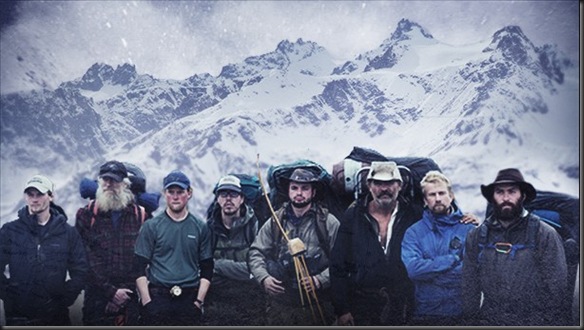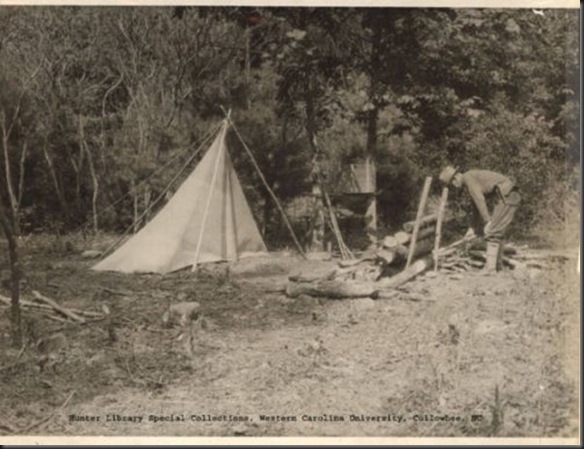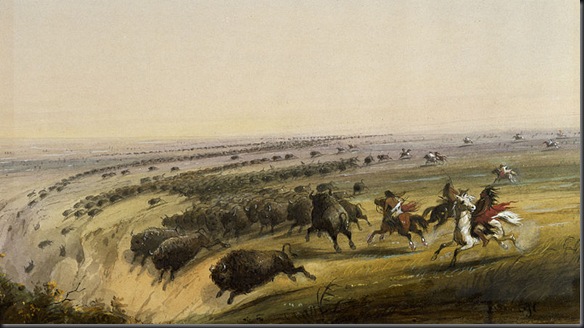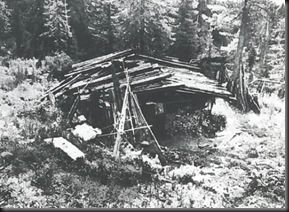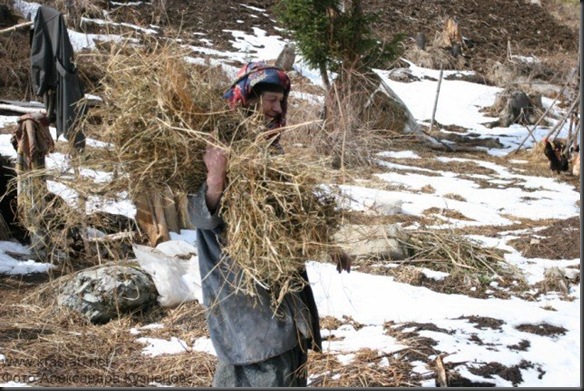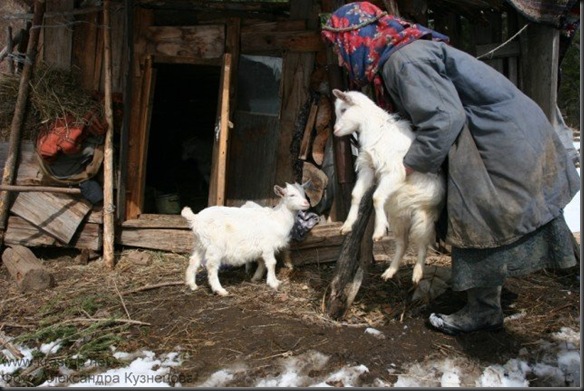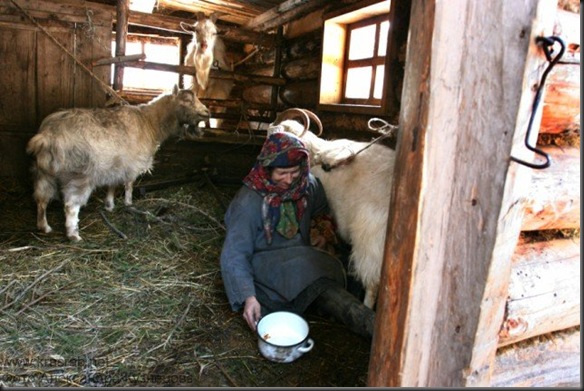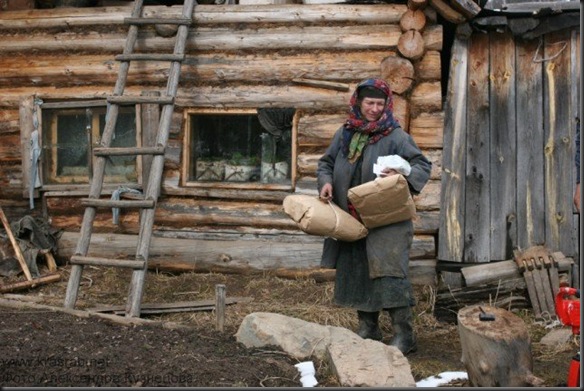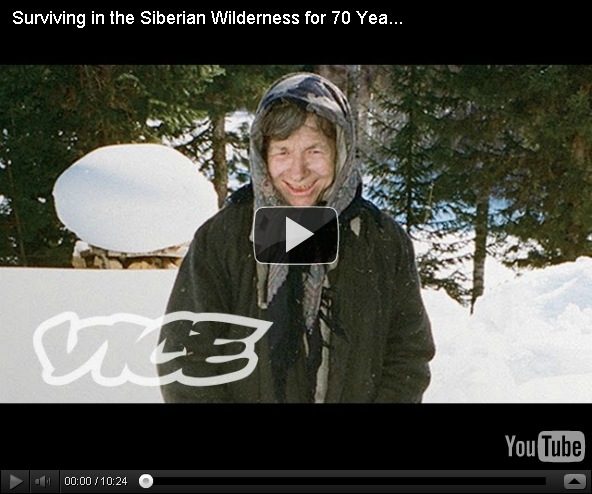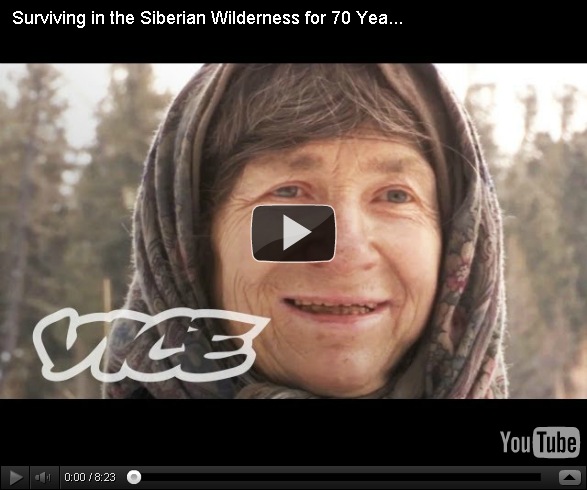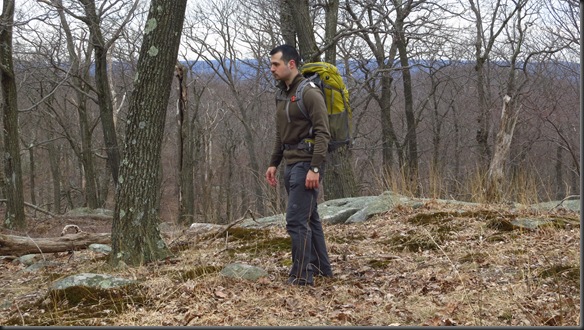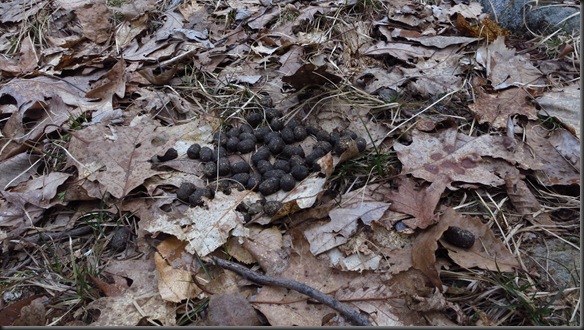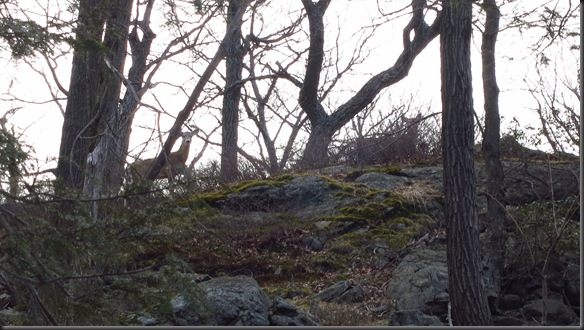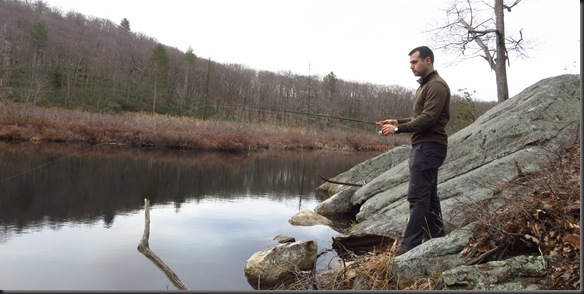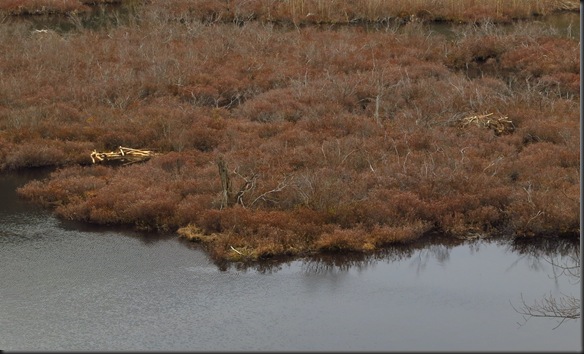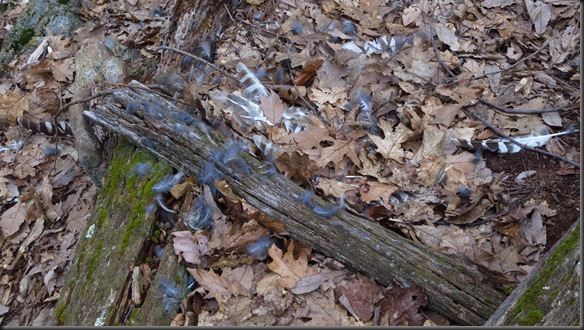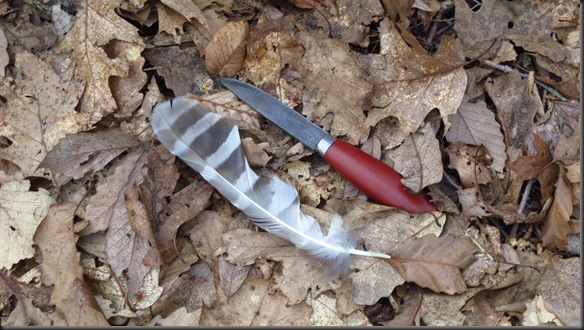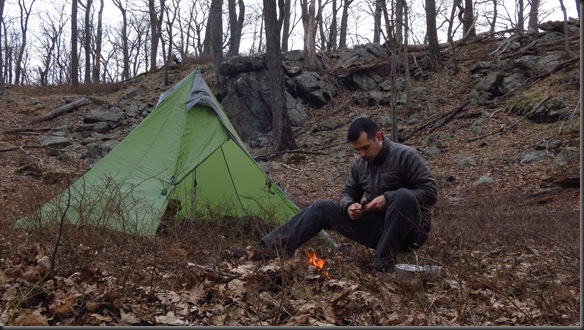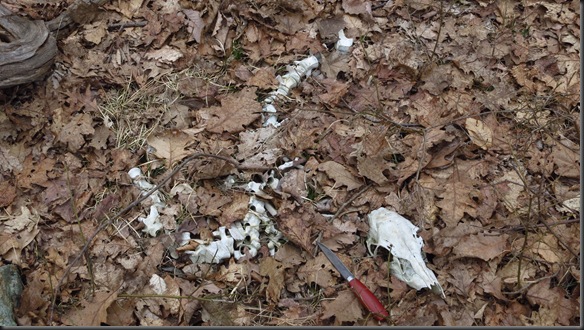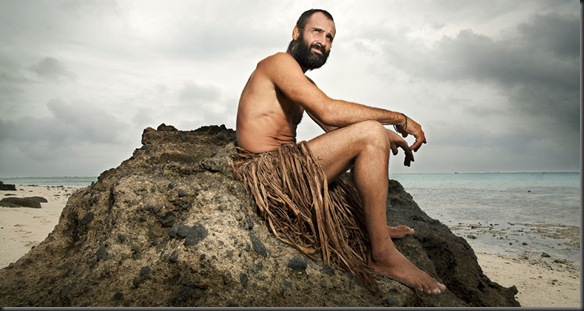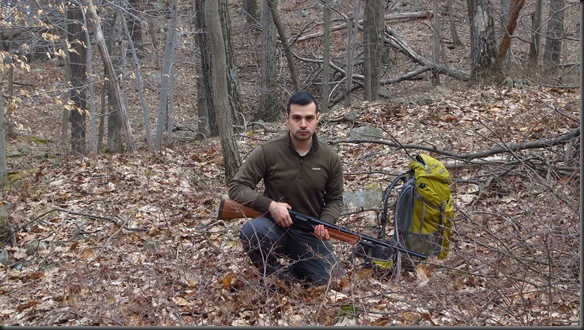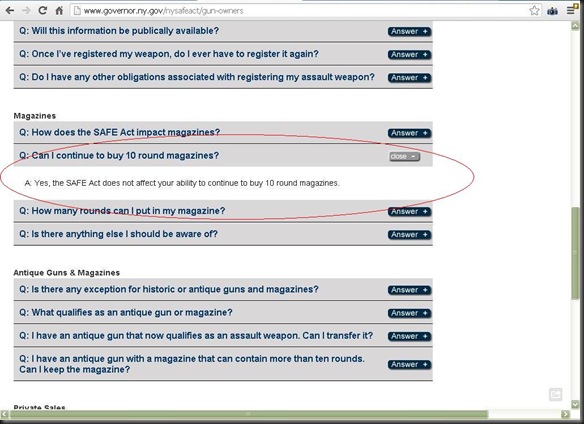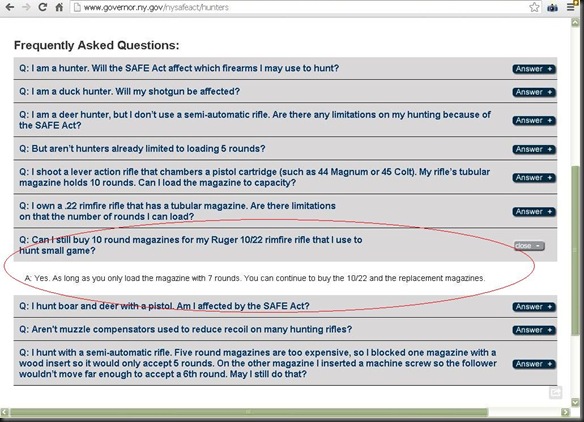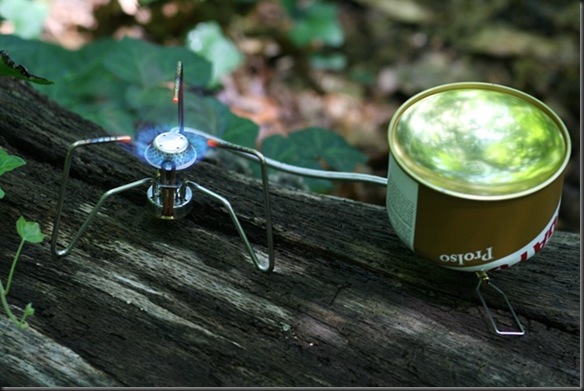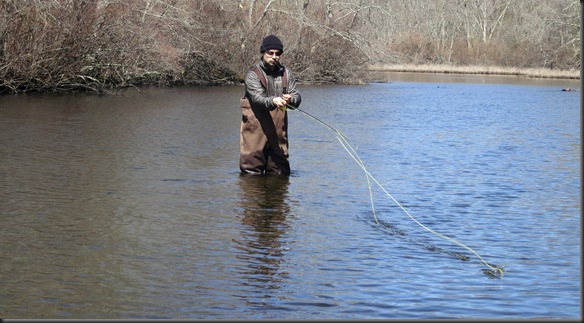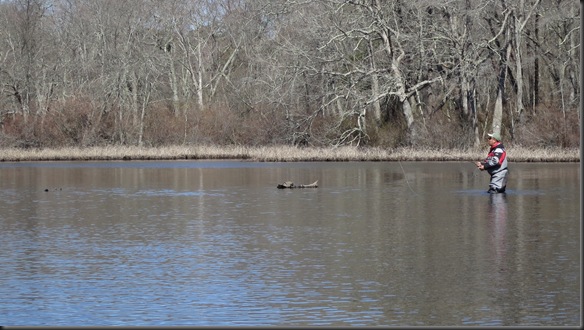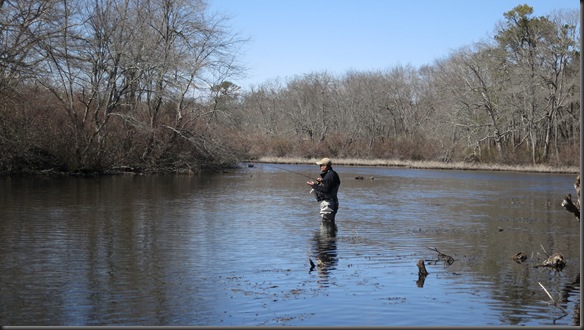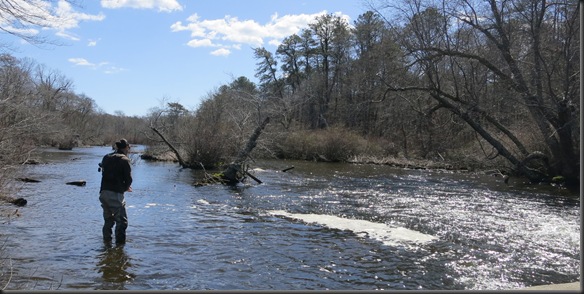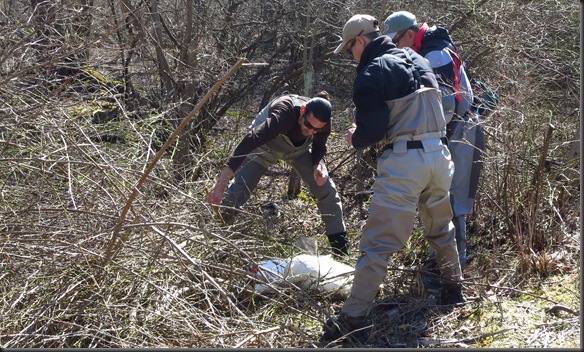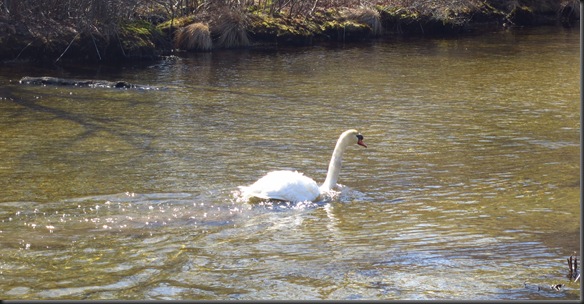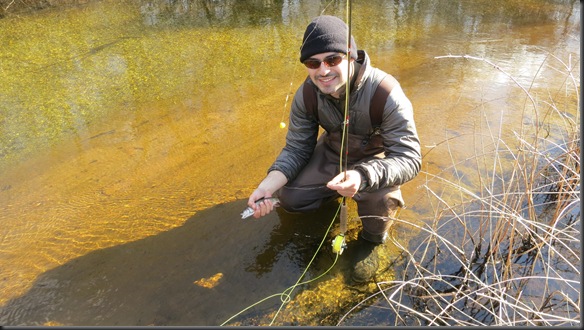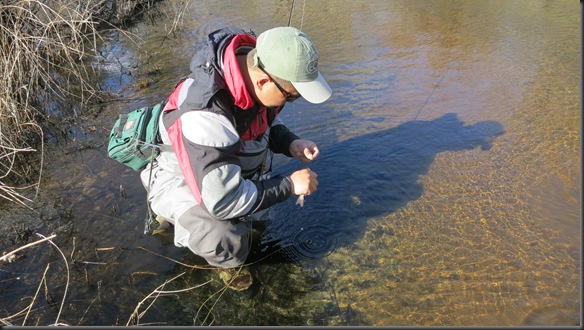You guys have probably noticed that I am posting about more trip reports than I used to. The reason is that I usually only post the ones that I think are more significant or interesting. Lately however people have shown interest in my random bumming around in the woods, so I figured I would post about a few more of my trips. This past weekend was one of them.
This weekend I was taking a hunting class up in the Catskills. The location is about a three hour drive from where I live and is right at the edge of the Slide Mountain Wilderness. I figured that instead of going to class on Saturday, driving back home, and then driving back up to the location on Sunday, I would just camp out in the woods after class on Saturday, and be there on location on Sunday.
On Friday, I was getting my pack together, and while doing that, I was going though some online forums. I noticed that on Bushcraft UK someone had posted a question about whether a person can survive a night in the UK woods without a rucksack full of gear (or something along those lines). The answer of course is that it is hard NOT to survive, but it gave me an idea. I figured, why not try to make my overnight stay a simulated survival situation?
Now, I have written before that I am not a big fan of unlikely “survival” scenarios where people just get to show off gear. You will virtually never get stranded in the woods with no backpack, but carrying a full size axe and fifty feet of rope. So, I figured that I would try to make it a bit more realistic. The set up would be a situation where I went out for a day hike, and got stranded in the woods. I would have with me the gear I usually have on a day hike.
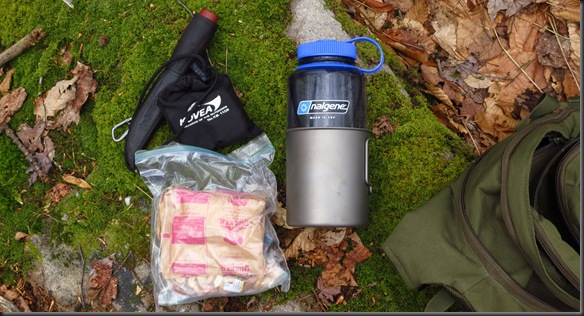
Those things include food for the day, a Nalgene 1L bottle with a nesting Backcountry Stoic Ti Kettle, a Mora #2 knife, and a small pocket pouch in which I keep a Fenix E01 flashlight, a mini BIC lighter, and three Altoids Smalls tins. One of the tins holds my repair kit with a few fishing hooks thrown in on the bottom. The second tin holds some medications I commonly use and water purification tablets. The third tin contains tinder (waxed jute twine) and matches. On the pouch itself a have attached a mini compass. You can see the contents in the picture below.
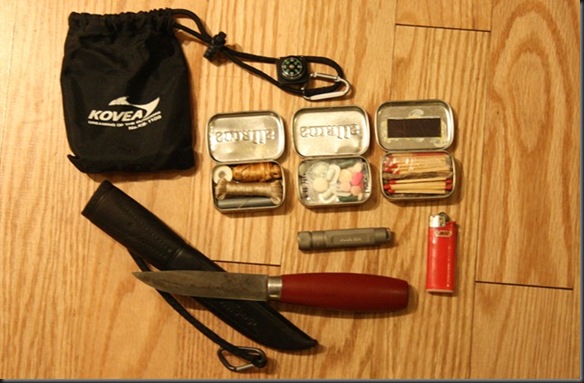
The reason why I decided to carry food is that foraging for food is just an illusion in most simulated survival situations, and I didn’t want to pretend that a few fiddle head ferns and a handful of wood sorrow was enough for dinner. It’s not. People who simulate similar survival situation usually simply go hungry for the duration of the trip. That doesn’t really show anything other than create the illusion that the 50 calories they were able to gather somehow constitute food for the day.
So, all that being said, I went to my hunting class on Saturday. It lasted from 9 am to 5 pm. When I got out, I headed into the woods. I thought this would be a good simulation of a survival scenario because that’s the time of day when you usually accept that you are lost and start trying to do something about it. You rarely decide you are lost at 10 o’clock in the morning, holding a full size axe.
I carried my gear in a small daypack. Aside from the items you see above, and the clothes I was wearing in the picture, I had some extra clothing in the pack. It was the clothing I would carry with me on a day trip this time of year. It is simply my standard three season clothing. You can see a full post on it here. In the picture below, my REI Revelcloud, my hat, neck gaiter and Arcteryx Beta SV shall jacket are in the pack.
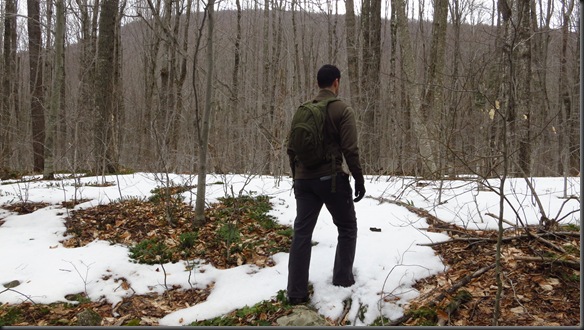
The weather around here was been warming up this month, but when I started out, I was in a valley where there was still some snow. The mountain further up looked clear of snow, so I headed that way. I had to cross a river, which required some rock hopping.
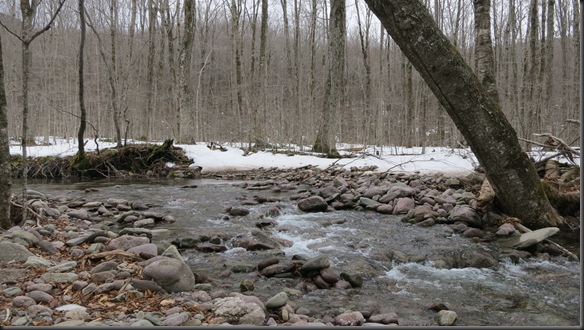
I ran across some tracks that I couldn’t identify. They were old.
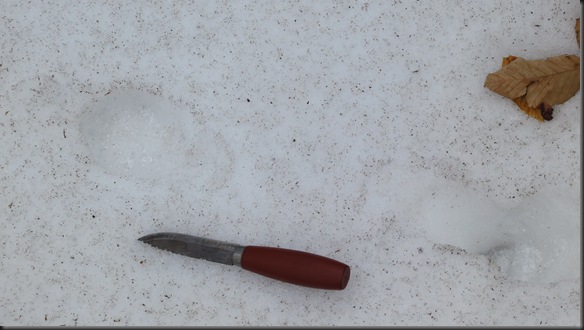
There was also some horseshoe fungus around, although I have never been able to figure out a good immediate use for it. It was too wet to be of any use in fire making that day.
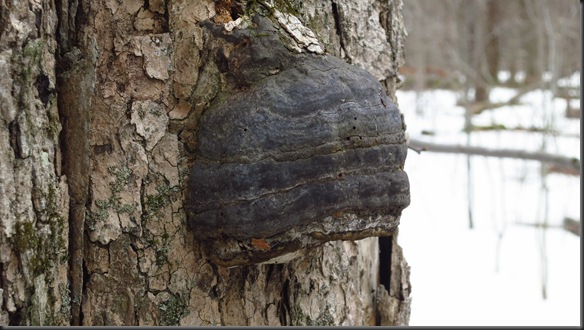
Further up the mountain I found some deer scat. It was hard to tell how old it was because of how wet the ground was.
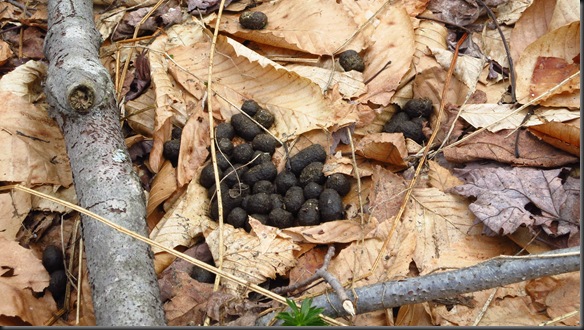
I followed one of the tributaries of the river I had crossed up the mountain so I could be close to water. The snow cleared up fast as I gained elevation. The ground however was still extremely wet from the snow melt.
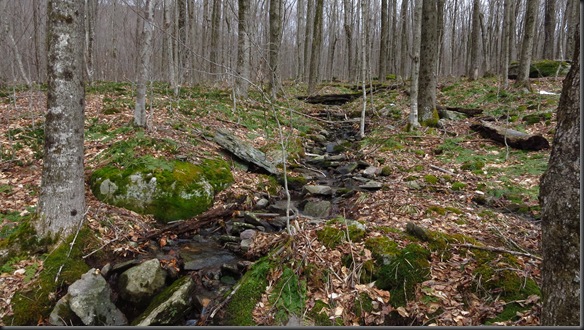
I traveled about a mile into the woods. I didn’t want to go too far in because I didn’t want to be late for class the next day. Around 6 pm I started looking for a good camp location.
Now, as you can see, there are no large spruce trees for shelter. In fact there is no cover anywhere. Also, seeing how there was about an hour and a half till sunset, building a shelter of any sort, lean to or otherwise, was not a practical use of my time. My time would be better spent finding a sheltered location and gathering firewood. I finally found a spot that I could customize to my liking.

The spot consisted of a rock that could serve as a windbreak. It was situated within a tightly forested area, so the trees served to block most of the wind. I dug up a large rock that could serve as a heat reflector for the fire and placed it in front of the windbreak. There are no evergreens here, so a bough bed was not going to happen. Leafs could be used, but they were all wet. They would offer virtually no insulation. What I did instead was to find a large piece of birch bark and lay it down as a sitting area. It would not provide much insulation, but it would keep me relatively dry. I also used a piece of bark as a fire platform in front of the reflector rock.
This brings me to the next reason I chose this location, availability of fire wood. There was a lot of birch around, and in particular, some trees that were knocked down by the storms. Birch is not a good wood for maintaining a long burning fire, but under these wet conditions it is easy to light.

I gathered as much wood as I could before it started getting dark. I then light the fire, put on all of my clothing, and settled in for the night.
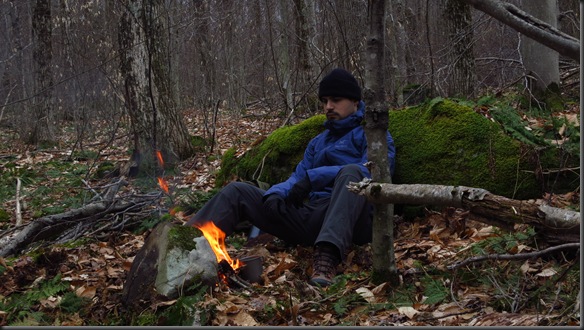
Now, I know that people tell you to make a long fire, and stretch out in front of it on a bough bed. That only happens in imaginary survival situations where you start working on your shelter and fire at noon. It is very hard to do when it actually matters. The resources around me would not allow for a bough bed, and maintaining a long fire through a ten hour night requires huge amounts of wood. Had I made a long fire, the woods I had prepared would have been gone by 1 am. The only thing that could be done is to make a small fire and use it to warm up when you get cold. It doesn’t allow for much sleep, but it works.
Now, the immediate question that get’s asked is, “Why not carry an axe?” After all, with an axe you might very well be able to gather enough wood for a long fire in the hour and a half before sunset. Or, “Why not bring a blanket?” It would still be minimalist, right? The simple answer is that there is no way I am carrying those items on a day hike. If I was going to carry all that weight, I would just bring my regular backpacking gear, and be comfortable all night. Think about it; for the same weight as a 5lb wool blanket, I can bring both my sleeping bag, and my shelter. For the weight of an axe, I could have brought my sleeping pad, pot, stove, etc. Replacing items from your kit with other poorly performing items does not create minimalist camping, or a survival simulation. It is just poor planning and gear selection. I wanted to keep this scenario as realistic as possible, so I only brought items I am likely to have on me in a real survival situation.
Another question that could be asked is “Why not bring a space blanket or poncho to use as a shelter?” That is a fair question. In the past I used to carry a poncho for that reason. However, after trying to spend a few nights out in the rain with it, I decided that it simply doesn’t work as a shelter. It only works when you are wearing it. Ponchos, in my experience are too small to offer adequate protection from heavy rain. The poncho shelters look good in pictures, but rain never comes down from one direction, nor does it come down in the direction you want. A bit of wind, and the rain will be beating right in your face as you lay under the poncho. The only way to keep dry with it is to wear it. That is why I had my shell with me. It protects better from the rain than an improvised shelter. It kept the snow off me just fine during the night.
The night actually felt surprisingly warm. There were actually some snow flurries during the night, which continued into the next day, but it never felt cold. It must have been right around 32F (0C) to allow for snow, but still feel warm. At one point I was actually able to let the fire die down to coals, and lay down to get some more sleep. I didn’t feel cold. I maintained the fire through the night just in case I needed it.
Oh, and I forgot to bring a spoon. I just used a flattened stick for my mashed potatoes which I cooked in the cup. Burning out spoons and doing party tricks of that sort is just not realistic in such a situation. There is simply no time.
The next day I cleared up camp and headed down the mountain.

As I was making my way out of the forest, and crossing the valley again, I ran across an old camp that someone had used. I’m glad I camped further up the mountain. It seemed colder in the valley.
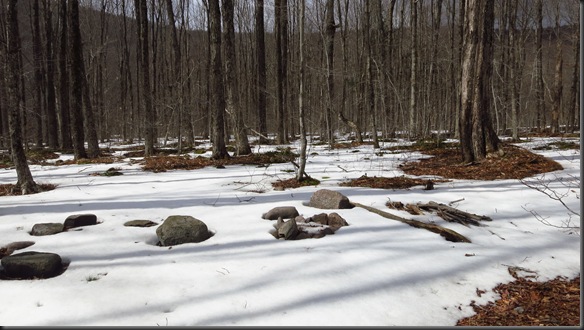
Overall, there were no problems. I didn’t get enough sleep because of having to maintain the fire through the night, but other than that, there were no issues.
So, I suppose the lesson is that it’s not that difficult to spend the night in the woods with very little gear. It is not the most comfortable thing to do, but unless you are careless or very unlucky, it’s not too much of an issue. For most people it is a psychological issue, where being exposed during the night in the mountain is a frightening thought. However, once you have done it a number of times, it shouldn’t pose much of a challenge. I made it to my class on time.
